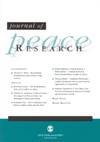Review of Åsne Seierstad's The Angel of Gronzy: Inside Chechnya (2008), translated by Nadia Christensen. London: Virago. 341 pp. ISBN 9781844083954.
Journalist Åsne Seierstad’s fourth book, focusing this time on Chechnya, reads as a sincere and sensitive effort to understand the social impact of conflict on an individual level, particularly emphasizing how such violence afflicts children. The physiological and behavioural consequences documented (albeit anecdotally) of an ill-fated generation, growing up in an environment ravaged by a decade-long conflict, gives a disturbing and heartbreaking portrait of a fractured society. It is no surprise to learn that Seierstad cut her teeth here as a young reporter in the mid- 1990s, at the start of the first Chechen war. Seierstad mostly resists making lofty moral judgements, as in The Bookseller of Kabul (2003), and this account does not suffer from the perceived sense of opportunism present in A Hundred and One Days (2004), her journal of Coalition-occupied Baghdad. Indeed, this book echoes her first, the lesser known With Their Backs to the World (2000), a similarly discreet portrait of postwar Serbia. Even so, this is a more reflective piece, on a place and people for whom she clearly displays empathy and has developed an innate understanding. Though this approach does not necessarily succeed in providing a clear narrative, the excellent historical and political context within which she frames her disparate collection of human stories, each retold with her often idiosyncratic and magpie-like observational manner, certainly helps. In the wider context, even her critics would be hard-pressed to deny that taken as a series, these books equate to a substantial comparative body of work with common themes and a distinct perspective on the suffocated hopes and dreams of people emerging from various conflicts, with this particular addition perhaps her most accomplished and least flawed.






